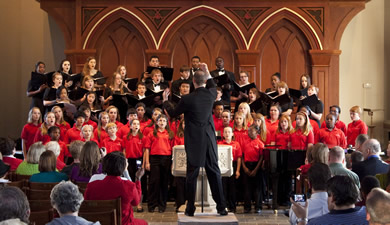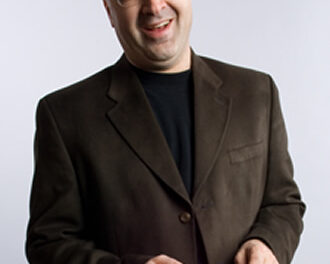Violinist Dan Skidmore and pianist Omri Shimron titled their fine Elon University recital “Classical Blues,” alluding to a popular movement in a work by Maurice Ravel (1875-1937). This piece was sandwiched between a baroque sonata by Jean-Marie Leclair and a cornerstone of the repertoire by César Franck (1822-90). Skidmore teaches violin at Elon and Catawba College, is Concertmaster of the Salisbury and Associate Concertmaster of the Winston-Salem Symphonies, as well as a member of the Greensboro Symphony. I have noted the growth of his career since he played the violin solos in David Holley’s prize-winning staging of Jacques Offenbach’s Orpheus in the Underworld for UNCG Opera Theater. Shimron is an associate professor of music at Elon and has racked up an impressive array of prizes and recitals. The small audience in Elon’s acoustical jewel, Whitley Auditorium, heard well-prepared for the performed selections.
Jean-Marie Leclair (1697-1764) was the victim of an unsolved murder mystery having been found stabbed to death in his home in a rough section of Paris. His career coincided with the conflicts between French traditions and the imported Italian at the Court. Although Leclair received his early training in Turin, Italy, the baroque violinist and composer was credited with founding the French violin school. The composer, with his numerous violin concertos and books of violin sonatas, was the only serious rival to the dominance of the Italians. The printed program listed Sonata in D by Leclair without any catalog or opus designation. A Google search quickly identified it as Opus 9, Number 3, a very frequently recorded favorite of violinists. It follows the sonata da chiesa format of a slow introduction, a fast allegro, a singing slow movement marked “Sarabanda: Largo,” and a lively finale marked “Tambourin: Allegro vivace.” Skidmore produced a warm tone with a good range of color. His intonation was excellent as was his phrasing. Shimron kept Elon’s beautifully restored Steinway’s lid fully up but kept his dynamics in careful balance with the violin. Chosen tempos were effective. The sound of a musette, a peasant bag pipe, is evoked by a droning figure in two movements.
Shimron preceded the performance of Ravel’s gorgeous Sonata (1923-27) by explaining how French and other European musicians were captivated and fascinated by the Blues and Jazz brought over by American Black musicians. Instead of trying to reconcile fundamentally incompatible instruments, Ravel said he wanted to emphasize their irreconcilability through treating them independently. The Sonata makes use of bitonality and brash harmonies besides Ravel’s take upon the Blues. A highlight of the second movement, “Blues,” is an episode in which the violin suggests the wailing of a saxophone supported by the piano evoking the sound of strumming guitar chords. Skidmore and Shimron brought a wonderful swagger to the piece. Skidmore’s pizzicatos were terrific while he brought off the constantly mutable palette of string colors. Both players brought off the final perpetual motion with verve.
Shimron reminded the audience that César Franck composed relatively little for piano and was better known for his organ works. This is reflected in the thick waves of sound Franck conjures up in the piano part of the Sonata in A major (1886). Its four movements are held together by the composer’s cyclic use of themes. Balance between the two players was superb and both articulated clearly, no matter the tempos. The interpretation was well within established standards and was very satisfying. Skidmore’s playing of the third, slow, movement was very eloquent.
Everyone was lucky because several passing freight trains managed to whistle through between selections!













